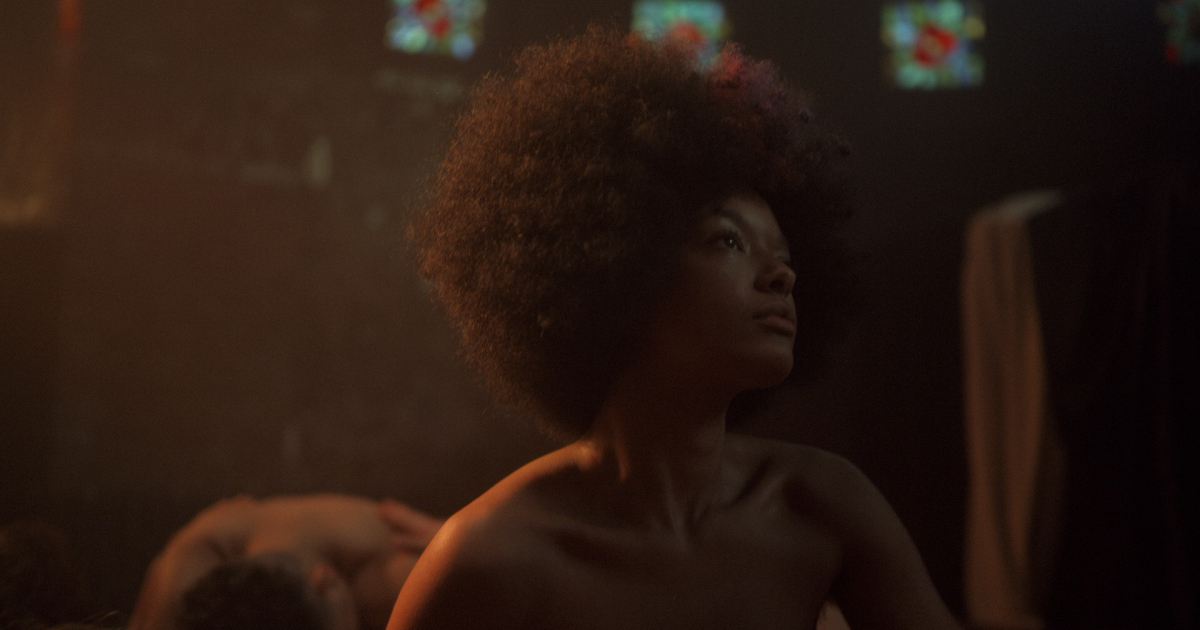MEMBER IN THE SPOTLIGHT: FREEK ZONDERLAND
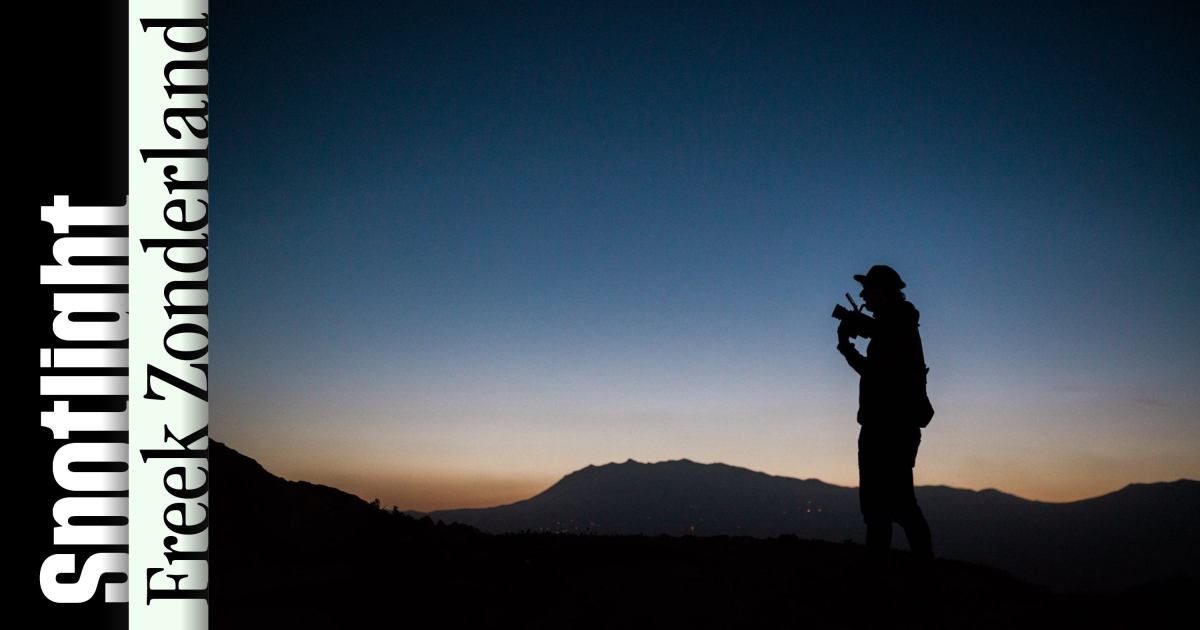
This week, Freek Zonderland blinks blearily under our spotlight. A creative autodidact and self-proclaimed hater of the term, Freek is a cinematographer, producer, and editor that has been involved in award-winning short films, documentaries, and most recently the narrative short “Need” directed by Jonnah Bron which last week showed at IFFR. He has also shot for organizations like Adidas, ABN Amro, Philips, Gazelle, Eye Filmmuseum, and the Dutch Government.
First things first Freek ... In the name of creativity please draw a self-portrait.

What kind of creative pursuits did you follow as a child?
I remember sitting next to my father in the car at just 5 or 6 years old. He had just finished his photography studies. While watching the city pass by outside of the car window, I said to him “Look Herman, what a beautiful light”. Surprisingly it took years before I discovered that film was my medium.
I had piano lessons for many years, played and sang in a bar, wrote poetry, but I rarely took pictures. When I was 16, I discovered that all of the above come together in cinema.
What do you do outside of work that gets your creative juices flowing
Photography is something I really enjoy, without the need to achieve anything. It still feels very freeing to me. Instead of having to think about the edit, the complete story and movement, everything is captured in one frame. That’s not necessarily easier, but it creates clarity in my head. You just immediately know when you have got it.
PHOTO SERIES: BUSKERS - FREEK ZONDERLAND

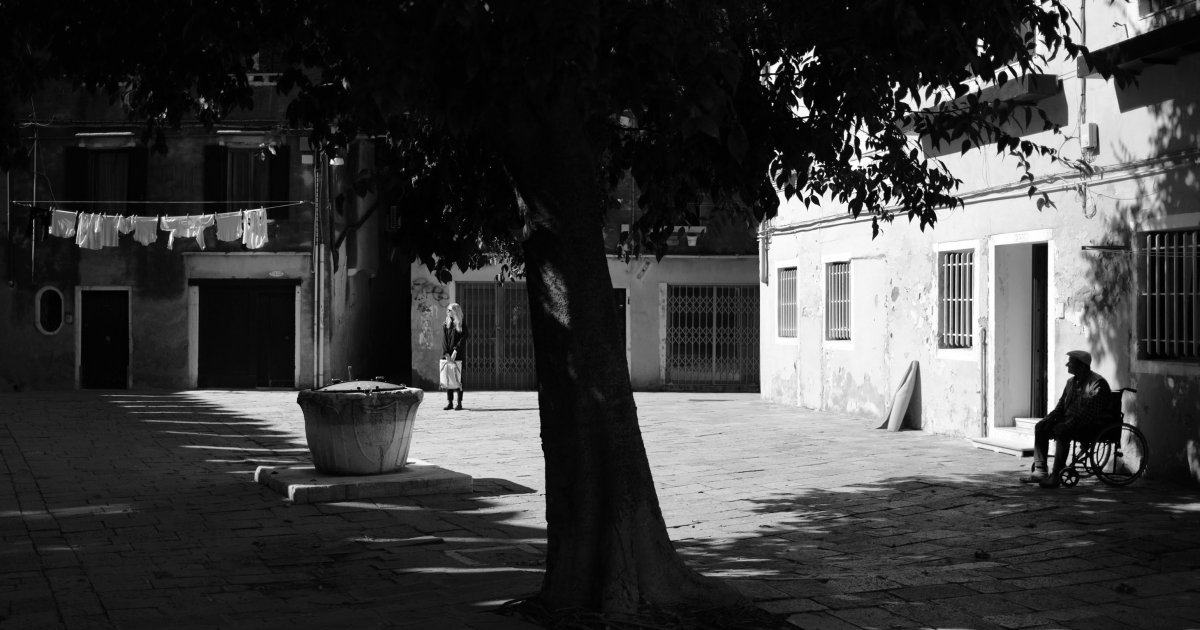

Do you have a creative obsession that you keep coming back to?
I used to make a lot of music as a teenager and I want to get back to that. It never came naturally to me, I had to work for it, which is probably why I stopped doing it as much. I really want to push myself in that direction again. Thanks for reminding me.
What music will we find on your playlist?
Growing up, my parents always insisted on me having jobs that were relevant to my ambitions. So for years, I worked in a vinyl store in Delft, ’t Platenmanneke. Most of the money I made there I also spent in the shop, buying the music I ‘discovered’. This is a very privileged position to have been in, and I enjoyed it a lot, it formed me and has resulted in a very wide-ranging taste. Spending so much time around music helped form my sense of rhythm, my pacing and editing. Although I am a cinematographer I think that sound is the most important part of a film. It is where the true emotion lies, and grants the real access to someone’s heart and feelings.
Max Richter’s ‘Vivaldi Recomposed’ can make me cry instantly, and Nils Frahm’s ‘ALL MELODY’ touches me on a more spiritual and sacral level. Wende, Froukje, and Spinvis show me how beautiful our tiny "Nederlanse" is, and how much you can do with it. Often we think we have to travel far for beauty, but in our obsession with the outside, we forget what we can find inside, inside our country, our cities or ourselves.
When I was given this interview, I decided the best way to answer this question was to make a playlist. But I definitely underestimated the time and energy it would take! I spent a LOT of time on this and maybe - probably - more time than I will ever admit.
PLAYLIST
What is your favorite style/medium of art and why?
Film. It truly is all other art forms combined. Which is beautiful but also sometimes overwhelming. It can actually keep me from going to the cinema because it’s just too much. Watching a movie like ‘C’mon C’mon’can do so much to me emotionally and can evoke life questions like: Do I want to have children? What does parenthood even mean today? Sometimes I have to protect myself from it by not watching as many movies as I maybe should.
Film came into existence during the time of surrealism and magical realism. For me, that is still at the core of what makes a good movie for me, maybe with a hint of impressionism.
For the past few years, I have been regularly visiting the Venice Art Biennial together with my partner. The visceral immersive experience of art taking over a city is something truly wonderful. Art is everywhere and all around you. Both new and old with the city as a centuries-old frame surrounding and supporting the modern artists and works.
Photo series: THE HUMAN FRAME - Freek Zonderland
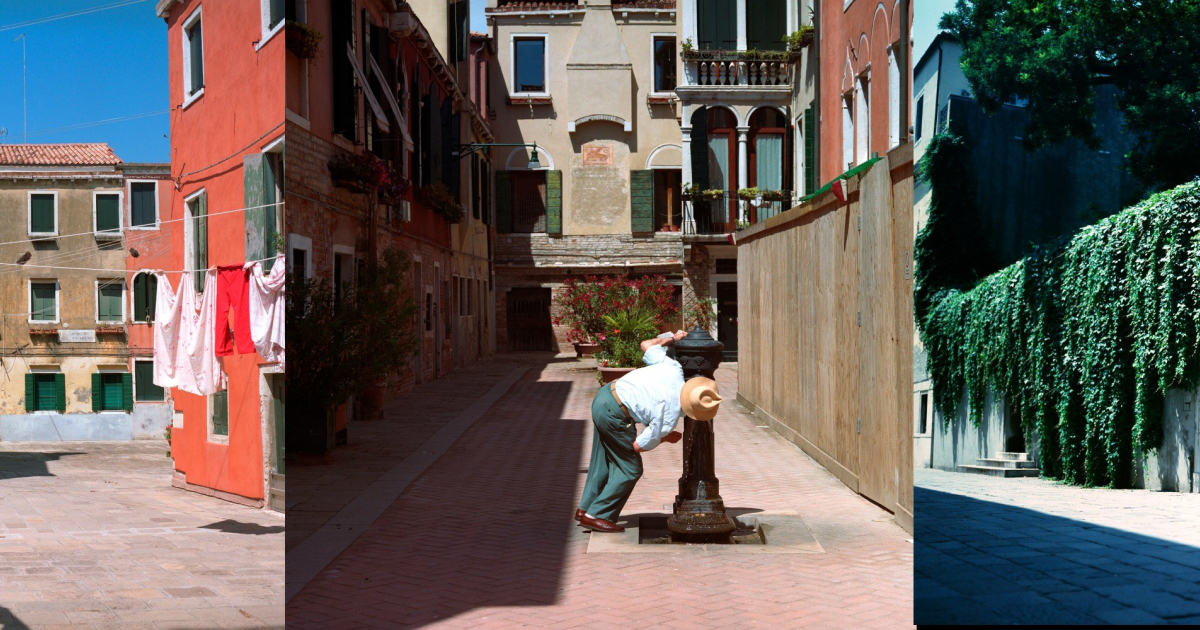
What software could you not do without?
In the end, all things technical are just tools - software too. Nothing is essential or irreplaceable when making art, your stories will find a way out of you regardless. The right tools can make your life a lot easier of course, and in that sense, DaVinci Resolve has been liberating. Both for me personally and for the film community as a whole. It used to be just a color grading tool, but now the entire post-production process can be done without ever leaving the software. From editing to sound and color. The basic version is free, allowing everyone with a computer or iPad to make movies.
Filmmaking is typically a very expensive art form and BlackMagic’s software has single-handedly made it a lot easier and cheaper for a lot of people to make movies and make them look good. It’s democratizing in that sense and I think that’s important. Making a career in film is not just for the rich kids anymore.
Are you busy with any creative side projects?
I want to try to translate film into physical space.
Not all films are suited for non-linear, multi-screen projection, but when done right it can have an incredible and immersive effect. Last summer during a commercial project with director Océane Combeau in Italy we shot documentary footage of a young family living in a tiny mountain village. The shots are often long and not much is happening, but it is mesmerizing to see their life unfold, almost as a surprise to themselves. Something like this, we think, could effectively be brought into physical space. Projected on screens scattered in space, accompanied by a separate soundscape perhaps with a subtle theme tune popping up once in a while when we see them on their boat on the lake...
Still from Di Albicocca - director Océane Combeau

How did you get started as a filmmaker?
When I discovered that I liked making movies, I also found out that the local library in Delft had video cameras to lend. I was hooked. I started skipping school and spending more time in the library. They allowed me to use the cameras as much as I wanted in exchange for helping them create videos to highlight authors and events.
I got into the HKU, audio/visual program, but quit within a couple of weeks. I wasn’t ready to follow another set course after just graduating high school.
Then another opportunity emerged out of the library, to join the architectural team from Mecano and Francine Hooben as a filmmaker. Documenting their process and creating a final pitch video for a new library, I learned a lot in just a couple of months and was able to afford my own editing setup at the end of it.
That allowed me to start working as a freelance filmmaker, but I wanted more. Making narrative films was the dream. Through the library, I got in touch with director Richard Valk. We decided to make a short film together. The resulting film Rode Gordijnen (Red Curtains) was selected for numerous international film festivals and became a Vimeo Staff Pick. It wasn’t easy from there, but it did kickstart my career.
Briefly describe what you do as a cinematographer
At its core as a cinematographer I translate the vision of a director, sometimes a creative team, to a technically, practically executable plan. That doesn’t sound very creative maybe, but I think it very much is. Coming up with ideas is one thing, but finding the ways to actually make them happen is a completely different game. That’s the spot where I prefer to be and where I thrive.
I follow my intuition on set and nothing beats the sacred time between action and cut for me. It doesn't matter if a project is documentary, narrative or commercial, all I care about is the story and the people. With the right combination of warmth, openness and respect magical things can happen. All of that is created in the dynamics with your crew and subject. Position is everything, not just your position in relation to the light, but also the balance in the shot and moving at the same pace as your talent.
Out of the campaigns/projects you’ve worked on, which makes you the most proud?
I’ve done wonderful campaigns for brands like Adidas and Philips that I’m really proud of, but nothing beats long-form, long-term projects like the 90-minute documentary Truus’ Children, which I worked on from 2017 to 2021 with directors Pamela Sturhoofd and Jessica van Tijn. It was released on Netflix. For three years we traveled all over the world to find and interview the ‘children’ that Truus Wijsmuller saved during WWII. We found almost 30 of them, most of whom were on the final boat to leave IJmuiden on the day of the Dutch Capitulation. It was an unforgettable experience, to be able to talk to these people and hear their stories firsthand. I had nightmares every night after an interview, but if there was one film I could make in my career it would have been this one.
Still from Truus’ Children - Directors Pamela Sturhoofd & Jessica van Tijn.
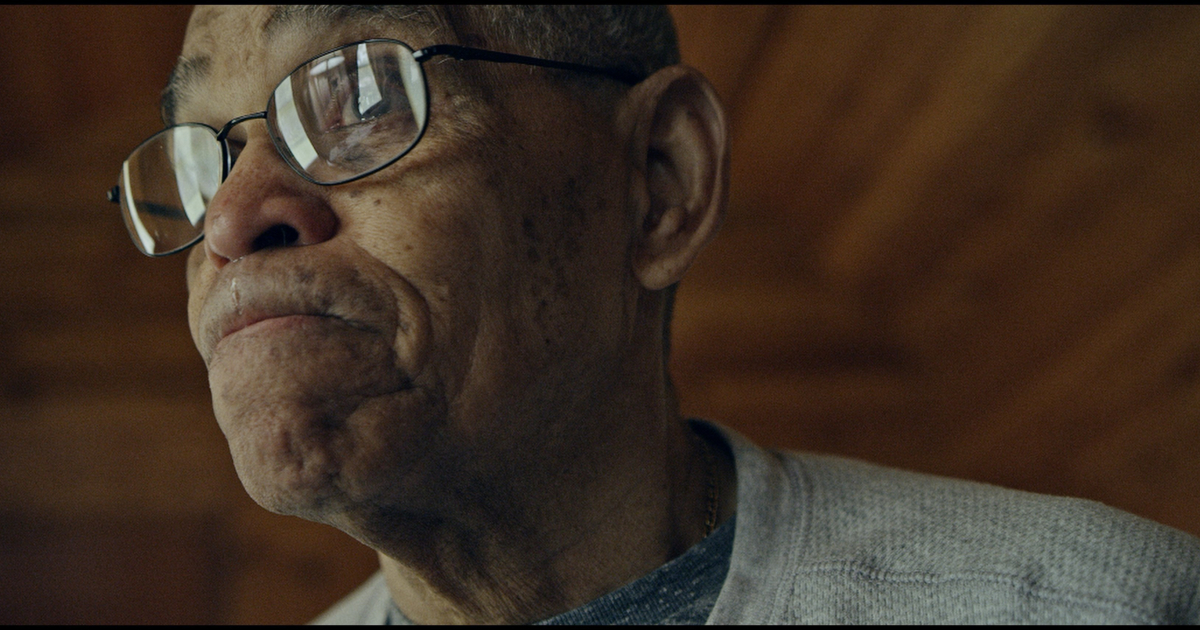
What is the boldest move you have made professionally?
Shooting a feature film in New York without knowing anyone, with just three weeks of prep time.
I received a Facebook message out of the blue from a friend of a friend asking if I wanted to read the script she was about to shoot in five weeks. The story was quite special with some really great actors attached. The budget wasn’t huge, but the director Julia Kots, had written the script smartly to fit it. I didn’t really see any reason to say no.
Cut to the first day of principal photography, I was standing on a ladder, with 30 extras in front of me and some very experienced actors and I almost fainted. Suddenly I began questioning everything that had led me to this point and shooting a film on a set halfway around the world with zero people I knew or trusted felt like a very bad idea. I started doubting why I wanted this. Julia and the production supervisor Robert Lopez took me aside, and we had a good chat, changed some things, and went on to become an amazing experience with a result I am extremely proud of.
Sometimes you have to lean into your vulnerability to surpass it.
Still from Inez & Doug & Kira - Director Julia Kots
In terms of your career, what are you most excited by for the near future?
The short film ‘Need’ directed by Jonnah Bron just finished screening at IFFR. This is the first narrative project that I shot since Covid and the first festival I’ll be attending with a film. It’s a very special movie about the different kinds of intimacy existing and the journey you need to take to find what fits you best personally.
It’s a very queer-focused film, crew, and cast, and a lot of people asked me why I shot this film as a cis, hetero, white dude. My answer was clear from the start, I wanted to be involved in this film because I think gender norms are a burden for everyone. I was bullied as a kid for being too feminine, and it took me a long time to overcome that. It’s still something I’m dealing with in finding my own voice, creativity, and freedom within.
Still from ‘Need’ - director Jonnah Bron
